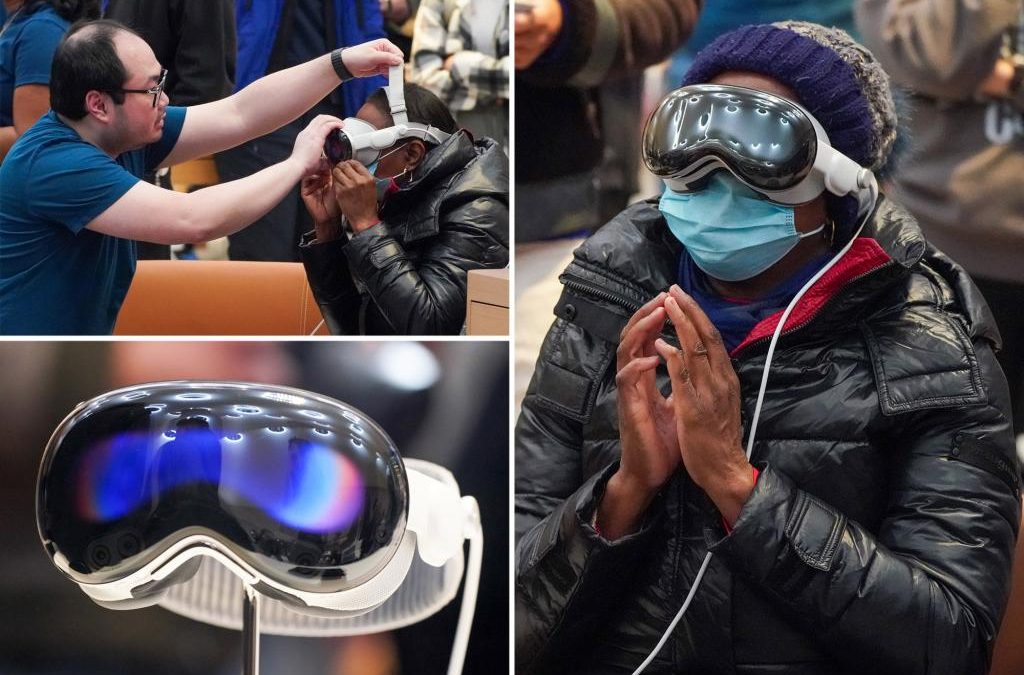You have to be a real techie to like Apple’s Vision Pro.
For starters, you can rarely move your head when using the virtual-reality headset or you have to start again.
And your eyes and hands are doing almost all the work.
I was among the few hundred people who lined up before sunrise Friday outside Apple’s New York City flagship store on Manhattan’s Fifth Avenue for the launch of the company’s futuristic $3,500 gizmo.
Once inside the crowded showroom, I registered for a Vision Pro demonstration — open only to people 13 years and up — which required filling out a detailed questionnaire about my eyesight, given that glasses cannot be worn with the headset.
People who wear glasses must have their prescription measured with a special device manufactured by a third party and then use optical inserts in the headset to adjust the visuals.
When I finally put the VR headset on, I had to undergo facial recognition and hand recognition and connect a series of dots by eying them and tapping my thumb and index finger together three times before I was let into the system.
From here on out, most everything was done with my eyes and fingers.
If I wanted to go to the menu, all I had to do was look at the icon, tap my index and thumb together and open it.
Same goes for photo folders.
If I pinched my fingers together, I was able to move the image in front of me around or resize it.
Each of my movements was captured by the device’s dozen cameras and five sensors.
Most of the time, I had to keep my head straight and only move my eyes or the headset would have to be reset, which takes up to a couple minutes.
Then there is the price tag: Vision Pro costs an eye-popping $3,500, which is about five weeks’ pay for someone earning minimum wage in New York City.
And there is the weight: at 20 ounces, the headset is relatively hefty, and the longer I used it, sitting stock-still with the gadget strapped to my face, the more I felt its bulk.
But during one of the few times I was able to move around was in the panoramic view mode, which allows more freedom.
As part of the demo, a performance by Alicia Keys was shown in the panoramic view, which looked remarkably realistic and close up.
I was able to watch her sing on one side and then turn my head and see her back-up performers.
The sound was just as impressive as the razor-sharp visuals, giving me the sensation that I was actually attending a concert in person.
Other immersive clips shown during the demo included men playing soccer, a surfer riding a wave and birthday candles being blown out on a cake.
At one point, I jumped back in my chair when it seemed like a rhinoceros was charging straight at me!
Source




